|
|
|
Sort Order |
|
|
|
Items / Page
|
|
|
|
|
|
|
| Srl | Item |
| 1 |
ID:
118050
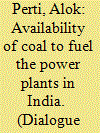

|
|
|
| 2 |
ID:
162330
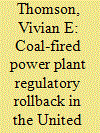

|
|
|
|
|
| Summary/Abstract |
President Trump wants to promote coal and weaken Clean Air Act regulations that affect coal-fired power plants. We analyze which US regions have benefited from air quality improvements realized since adoption of two Clean Air Act power plant rules, the transport and mercury rules, which have been targeted by lobbyists and national officials. For 20 coal states, we create a pre-regulatory emissions scenario for the current (2016) fleet of power plants. Using the US Environmental Protection Agency's CO-Benefits Risk Assessment screening model, we estimate the differences between the impacts of pre-regulatory emissions and current emissions on fine particulate matter (PM2.5) concentrations and on public health. We compare those impacts with voting patterns in the 2016 presidential election and with demographic data. Among the air quality and public health gains of the current situation relative to the pre-regulatory scenario are that: annual average PM2.5 concentrations are lower by 1–5 μg/m3; 17,176–39,291 premature mortalities are avoided for each year of lower emissions; coal mining counties and White, rural counties experience some of the best improvements in air quality; and, in several states, Trump counties benefit more than Clinton counties. We suggest refining these results with atmospheric dispersion models.
|
|
|
|
|
|
|
|
|
|
|
|
|
|
|
|
| 3 |
ID:
131276


|
|
|
| 4 |
ID:
176842


|
|
|
|
|
| Summary/Abstract |
Energy sector policies have focused historically on the planning, design and construction of energy infrastructures, while typically overlooking the processes required for the management of their end-of-life, and particularly their decommissioning. However, decommissioning of existing and future energy infrastructures is constrained by a plethora of technical, economic, social and environmental challenges that must be understood and addressed if such infrastructures are to make a net-positive contribution over their whole life. Here, we introduce the magnitude and variety of these challenges to raise awareness and stimulate debate on the development of reasonable policies for current and future decommissioning projects. Focusing on power plants, the paper provides the foundations for the interdisciplinary thinking required to deliver an integrated decommissioning policy that incorporates circular economy principles to maximise value throughout the lifecycle of energy infrastructures. We conclude by suggesting new research paths that will promote more sustainable management of energy infrastructures at the end of their life.
|
|
|
|
|
|
|
|
|
|
|
|
|
|
|
|
| 5 |
ID:
091701


|
|
|
|
|
| Publication |
2009.
|
| Summary/Abstract |
This paper aims at developing an integrated approach for estimating the employment benefits associated with power-generation technologies. The proposed approach exploits the input-output methodology for estimating the direct, indirect and induced employment effects associated with the energy project in question, as well as two different valuation techniques, namely the "opportunity cost of labour" approach and the "public expenditures" approach, for expressing these effects in monetary terms. This framework has been implemented to estimate the employment benefits resulting from the development of a lignite-fired and a natural gas-fired power plant in Greece, taking into account all the stages of the corresponding fuel cycles that are undertaken domestically. The results of the analysis clearly show that lignite-fired electricity generation results in significant employment benefits amounting to 2.9-3.5 €/MWh in the basic scenario. On the other hand, the employment benefits associated with the examined natural gas unit were estimated at 0.4-0.6 €/MWh in the basic scenario. It is also worth mentioning that the significant environmental externalities of the lignite-fired electricity in Greece that have been presented in a number of studies can only be partially compensated by the estimated employment benefits.
|
|
|
|
|
|
|
|
|
|
|
|
|
|
|
|
| 6 |
ID:
150671


|
|
|
|
|
| Summary/Abstract |
The United Nations Intergovernmental Panel on Climate Change (IPCC), the International Energy Agency (IEA), and several nations suggest that energy efficiency is an effective strategy for reducing energy consumption and associated greenhouse gas emissions. Skeptics contend that because efficiency lowers the price of energy and energy services, it may actually increase demand for them, causing total emissions to rise. While both sides of this debate have researched the magnitude of these so-called rebound effects among end-use consumers, researchers have paid less attention to the conditions under which direct rebounds cause CO2 emissions to rise among industrial producers. In particular, researchers have yet to explore how organizational and global factors might condition the effects of efficiency on emissions among power plants, the world's most concentrated sources of anthropogenic greenhouse gases. Here we use a unique dataset containing nearly every fossil-fuel power plant in the world to determine whether the impact of efficiency on emissions varies by plants' age, size, and location in global economic and normative systems. Findings reveal that each of these factors has a significant interaction with efficiency and thus shapes environmentally destructive rebound effects.
|
|
|
|
|
|
|
|
|
|
|
|
|
|
|
|
| 7 |
ID:
150968
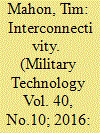

|
|
|
| 8 |
ID:
093610


|
|
|
| 9 |
ID:
150355


|
|
|
|
|
| Summary/Abstract |
One of the key issues in modern energy technology is managing the imbalance between the generated power and the load, particularly during times of peak demand. The increasing use of renewable energy sources makes this problem even more acute. Various existing technologies, including stationary battery energy storage systems (BESS), can be employed to provide additional power during peak demand times. In the future, integration of on-board batteries of the growing fleet of electric vehicles (EV) and plug-in hybrid electric vehicles (PHEV) into the grid can provide power during peak demand hours (vehicle-to-grid, or V2G technology).
|
|
|
|
|
|
|
|
|
|
|
|
|
|
|
|
| 10 |
ID:
162315


|
|
|
|
|
| Summary/Abstract |
As a newly-proposed method, intermediate approach has several unique features, relative to conventional radial and non-radial approaches. This study contributes to the DEA literature by combining intermediate approach with group heterogeneity in a time horizon. This extended methodology has two important advantages, since it can separate inefficiency related to different production frontiers originated from heterogeneity issue and provide steady results of time effects across periods. Empirically, this method is used to examine unified efficiency of Chinese fossil fuel power plants at provincial levels from 2005 to 2015. All provinces are classified into two regional groups. Our main findings are as follows. First, there exists significant group heterogeneity between coastal and inland provinces, where coastal provinces outperform inland provinces. Second, there are considerable differences in unified efficiency measures across provinces. For most observations, best-practice gap ratio is the most important driving factor. Furthermore, the relative importance of three decomposed indicators varies sharply across provinces. Finally, the concept of managerial disposability should attract sufficient attention, when designing environmental policies. Thus, there should be more combined contributions from eco-technology advancements along with managerial efficiency improvements by corporate leaders and policy makers. This can a new direction for China's environmental policy.
|
|
|
|
|
|
|
|
|
|
|
|
|
|
|
|
| 11 |
ID:
002318


|
|
|
|
|
| Publication |
Trombay, Department of Atomic Energy, Government of India, 1977.
|
| Description |
276p.
|
|
|
|
|
|
|
|
|
|
|
|
Copies: C:1/I:0,R:0,Q:0
Circulation
| Accession# | Call# | Current Location | Status | Policy | Location |
| 027889 | 333.7924/BHA 027889 | Main | On Shelf | General | |
|
|
|
|
| 12 |
ID:
163525
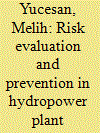

|
|
|
|
|
| Summary/Abstract |
Hydropower generation facilities are becoming increasingly popular in many parts of the world. One of the main reasons for this situation is that the resource reserves such as coal, petroleum and natural gas, which are called conventional energy sources, decrease day by day and their prices rise. So the efficient operation of hydroelectric power plants has become very important. When these plants are operated, it is possible to cause many hazards, including injury, illness, death, damage to the environment, property and equipment. In this study, it is aimed to perform risk assessment for hydroelectric power plants using Pythagorean fuzzy Analytical hierarchy process (PFAHP) method. The team of experts has identified twenty hazards and their results that could occur in the operation of the hydroelectric power plant. The weights of the hazards were determined by using linguistic expressions. Preventive measures have been taken for the three most important hazards. The results of this study are expected to contribute to the safety of hydropower plants and the prevention of financial losses.
|
|
|
|
|
|
|
|
|
|
|
|
|
|
|
|
| 13 |
ID:
118051
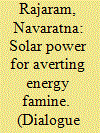

|
|
|
|
|
|
|
|